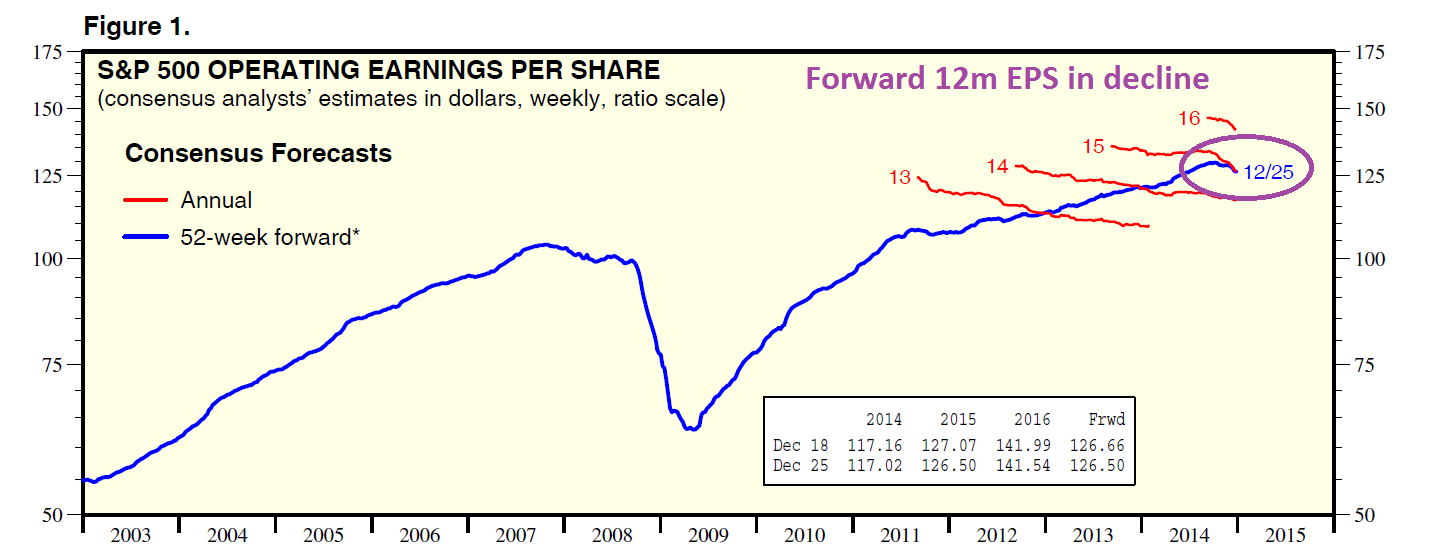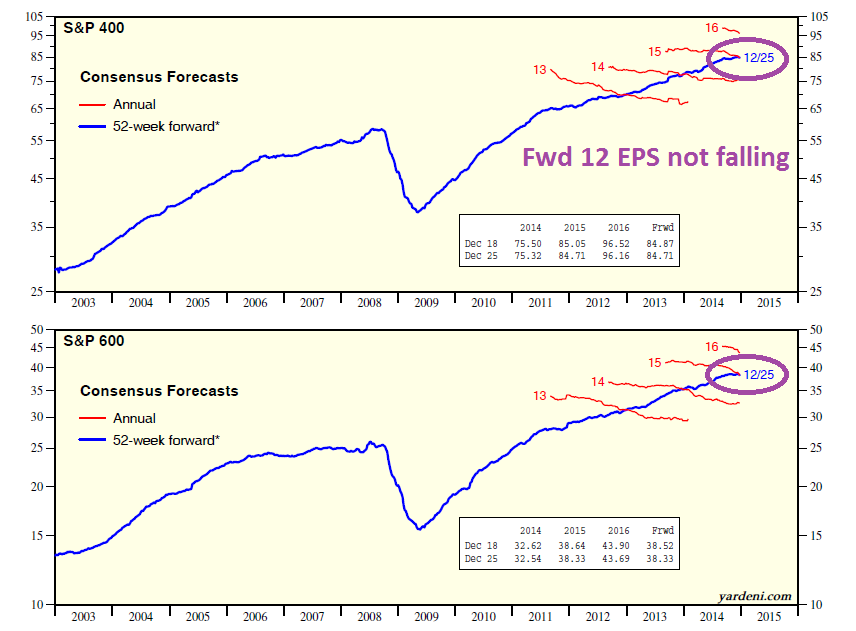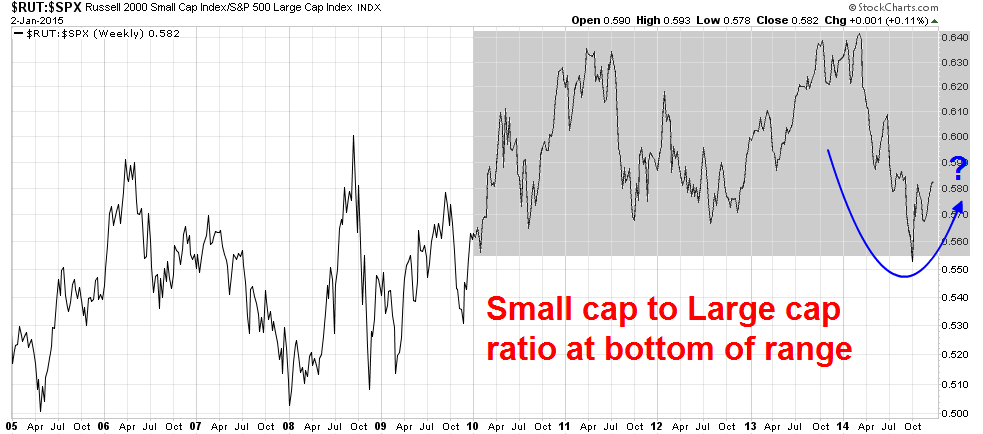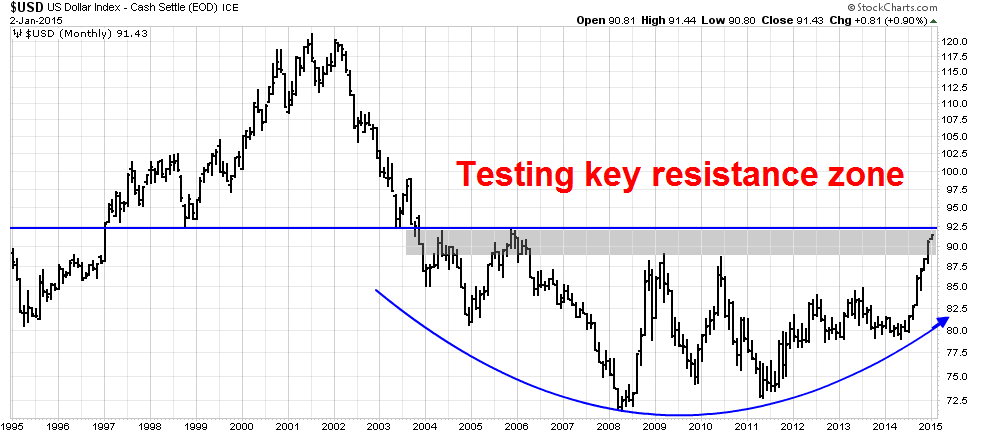I was reviewing my last weekend post (see The adults are back at their desks. Sell?) and noticed an interesting point about the trajectory of forward EPS estimates. In that post, I had shown this chart from Ed Yardeni indicating that forward 12-month EPS estimates were declining but suggesting that they would recover once the Street started to see and quantify the benefits of lower oil prices (annotations in purple are mine).

In fact, we are already seeing some of those effects. The contrast between the large cap S&P 500 and the mid and small cap stocks is quite striking. While forward EPS for large caps have been falling, EPS estimates for mid and small caps are flat.

That`s because large cap stocks are more international in nature and these multi-nationals are more exposed to the headwinds of a strong US dollar. If the investment thesis is to focus on the benefits of lower oil prices to the US consumer, a more targeted way of getting that exposure would be to focus on the US mid and small cap stocks, which have less foreign exposure.
The chart below shows the 10-year relative performance of the small cap Russell 2000 to the large cap S&P 500. The small to large cap ratio recently turned up as it reached the bottom of a trading range that began in 2010 and these conditions are suggestive of better small cap performance.

Longer term, however, the relative performance of small and large cap stocks are dependent on the outlook for the USD. As the chart below shows, the USD Index is making a rounded multi-year bottom and it is now testing a key resistance zone.

As Marc Chandler pointed out, the both the fundamental and technical near-term outlook is for a stronger dollar:
The US dollar is poised to extend last year's rally. The US economy is at least several quarters ahead of most of the other major economies. Barring a major surprise, the Federal Reserve will likely hike rates around the middle of the year, while the economies in Europe and Japan need more stimulus.
In the week ahead, investors will likely learn that the euro zone and Japanese economies continue to struggle, while US job growth continues. There are preliminary signs that labor costs are beginning to rise, helped by rising wages. This is expected to continue to underpin US consumption.
Still, it is unreasonable to expect the US economy to maintain the 4%+ pace seen in the April-September period. It also seems unreasonable to think that the drop in oil prices, lower interest rates, and weaker currencies will not have a positive impact on Europe and Japan. It will take some time. In the meantime, the divergence theme is the focus and this bodes well for the greenback.
Regardless of what the FX markets do in the next couple of months, small and mid cap stocks are likely to see better earnings growth as they reap the residual benefits of past USD strength. During the first half of 2015, I would be inclined to tilt my US equity exposure away from the large cap multi-nationals and toward the smaller domestically focused companies.
Disclosure: Cam Hui is a portfolio manager at Qwest Investment Fund Management Ltd. ("Qwest"). This article is prepared by Mr. Hui as an outside business activity. As such, Qwest does not review or approve materials presented herein. The opinions and any recommendations expressed in this blog are those of the author and do not reflect the opinions or recommendations of Qwest.
None of the information or opinions expressed in this blog constitutes a solicitation for the purchase or sale of any security or other instrument. Nothing in this article constitutes investment advice and any recommendations that may be contained herein have not been based upon a consideration of the investment objectives, financial situation or particular needs of any specific recipient. Any purchase or sale activity in any securities or other instrument should be based upon your own analysis and conclusions. Past performance is not indicative of future results. Either Qwest or Mr. Hui may hold or control long or short positions in the securities or instruments mentioned.
